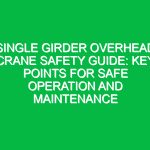Introduction
In the construction industry, safety is not just a priority; it’s a necessity. Construction site safety topics encompass a wide range of practices, procedures, and regulations aimed at minimizing risks and ensuring the well-being of all workers involved. The Health, Safety, and Environment (HSE) domain plays a crucial role in shaping these safety protocols. With construction sites often fraught with hazards—ranging from heavy machinery to working at great heights—understanding and implementing effective safety measures is vital.
According to the U.S. Bureau of Labor Statistics, falls, being struck by objects, electrocutions, and caught-in/between incidents are the leading causes of fatalities in the construction industry, commonly referred to as the “Fatal Four.” By addressing these construction site safety topics, we can significantly reduce the likelihood of accidents and injuries. In this article, we’ll explore essential safety tips, best practices, and the importance of adhering to regulations that govern construction sites.
Key Aspects of Construction Site Safety
1. Personal Protective Equipment (PPE)
One of the foundational elements of construction site safety is the use of Personal Protective Equipment (PPE). PPE includes gear such as helmets, gloves, safety glasses, high-visibility clothing, and steel-toed boots. These items are designed to protect workers from injuries related to falls, cuts, and exposure to hazardous materials.
- Head Protection: Hard hats are essential on construction sites to protect against head injuries from falling objects.
- Eye and Face Protection: Safety goggles or face shields should be worn when working with hazardous materials or equipment that generates flying debris.
- Hearing Protection: In environments with high noise levels, earplugs or earmuffs are necessary to prevent hearing loss.
- Fall Protection: Harnesses and lanyards are vital when working at heights to prevent falls.
2. Site Inspection and Hazard Assessment
Regular site inspections are crucial in identifying potential hazards before they lead to incidents. Before beginning any construction work, a comprehensive risk assessment should be conducted. This process should involve:
- Identifying potential hazards, such as unguarded edges, electrical hazards, and heavy machinery.
- Assessing the level of risk associated with each hazard.
- Implementing control measures to mitigate identified risks.
Documenting these assessments allows for ongoing monitoring and updates as the project progresses.
3. Training and Awareness
Training is a fundamental aspect of ensuring a safe construction environment. All workers must receive proper training on safety protocols, operation of machinery, and emergency procedures. Regular refresher courses should also be implemented to keep safety knowledge current.
Real-life Example: A construction company in Texas witnessed a significant drop in accidents after instituting mandatory monthly safety training sessions for all employees. This proactive approach not only improved safety awareness but also fostered a culture of safety on the job site.
Common Hazards on Construction Sites
1. Falls
Falls are the leading cause of fatalities in construction. To combat this hazard, employers should ensure that:
- All workers are equipped with proper fall protection systems when working at heights.
- Guardrails, safety nets, and personal fall arrest systems are in place.
- Employees are trained to recognize fall hazards.
2. Electrical Hazards
Electrocution is another significant risk on construction sites. To minimize electrical hazards, it is important to:
- Ensure all electrical tools and equipment are properly grounded.
- Use Ground Fault Circuit Interrupters (GFCIs) to protect against electrical shocks.
- Train workers on the risks associated with electricity and safe practices.
3. Struck-by Incidents
Workers can be struck by moving vehicles, falling tools, or materials. To reduce these risks, site managers should:
- Implement traffic control measures to manage vehicle movement.
- Provide training on safe practices when working near heavy machinery.
- Ensure that all materials are stored safely to prevent falling objects.
Best Practices for Construction Site Safety
1. Establish a Safety Plan
Every construction site should have a detailed safety plan that outlines specific procedures for managing hazards. This plan should include emergency response procedures, evacuation routes, and first-aid protocols. Regular drills should be conducted to ensure all workers are familiar with these procedures.
2. Foster a Safety Culture
Creating a culture of safety involves promoting open communication about safety concerns and encouraging workers to report unsafe conditions without fear of retribution. When workers feel valued and engaged in safety practices, they are more likely to adhere to protocols.
3. Use Technology
Advancements in technology can greatly enhance construction site safety. Tools such as drones for site surveys, wearable devices that monitor workers’ vitals, and mobile apps for reporting hazards can help in identifying and mitigating risks effectively.
Regulations and Standards in Construction Safety
Regulatory bodies such as the Occupational Safety and Health Administration (OSHA) set forth standards that govern safety practices on construction sites. Understanding these regulations is crucial for compliance and for fostering a safe work environment. Key regulations include:
- OSHA 1926: This standard outlines safety and health regulations specifically for the construction industry.
- OSHA Training Requirements: Employers are required to provide training for workers on the specific hazards they may encounter on the job.
Compliance with these regulations not only protects workers but also shields employers from legal repercussions.
Conclusion
Construction site safety is an essential aspect of the Health, Safety, and Environment (HSE) domain. By understanding and addressing construction site safety topics, we can create a secure work environment that prioritizes the health and well-being of all workers. Implementing robust safety measures, conducting thorough training, and adhering to regulations are crucial steps in achieving this goal.
As we move forward in the construction industry, let us commit to fostering a culture of safety, where every worker feels empowered to prioritize safety and where accidents are not just reduced but eliminated. The importance of construction site safety cannot be overstated—it is a collective responsibility that requires vigilance, commitment, and continuous improvement.


